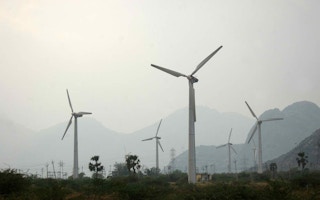Wind energy is soaring around the world, thanks to technology advances and energy policies that have reduced its cost. And things are only going to get better — with prices dropping substantially by mid-century, according to a survey of 163 of the world’s leading wind energy experts.
The results, published in the journal Nature Energy, suggest that the cost of electricity from wind could drop by 24–30 per cent by 2030 relative to 2014 prices, and by 35–41 per cent by 2050.
The key driver of this price drop? Bigger, more efficient turbines, according to the experts. Taller turbines with larger rotors make it possible for turbines to better harness stronger winds, generating more power.
Global wind power capacity more than quadrupled between 2006 and 2015. Over 97 per cent of this came from onshore wind, but offshore wind capacity has also been increasing, especially in Europe. Whether or not wind energy continues to play an important role in the future will rest squarely on its costs. So researchers have tried in the past to predict wind energy costs by looking at historical data and trends, then extrapolating into the future.
Researchers at the Lawrence Berkeley National Laboratory instead conducted what’s called an “expert elicitation” survey. These carefully designed surveys are designed to eliminate bias and are often considered the best tools to develop estimates of unknown or uncertain quantities.
The researchers asked experts about three wind power applications: onshore wind, fixed-bottom offshore wind and floating offshore wind. The results indicate that onshore wind should remain cheaper than offshore. But the actual cost of offshore wind will drop more by 2050 than onshore, which makes sense since offshore wind is a relatively immature technology, hence there’s more room for improvements.
The reasons for dropping prices varied by type of wind installation. For all types, one key factor was larger turbines with wider rotors, which increase the amount of energy a project actually generates. Another common reason was lower upfront capital costs and, for offshore wind, lower financing cost.
This story first appeared in Conservation and was republished with permission through Ensia.com. View the original article here.










